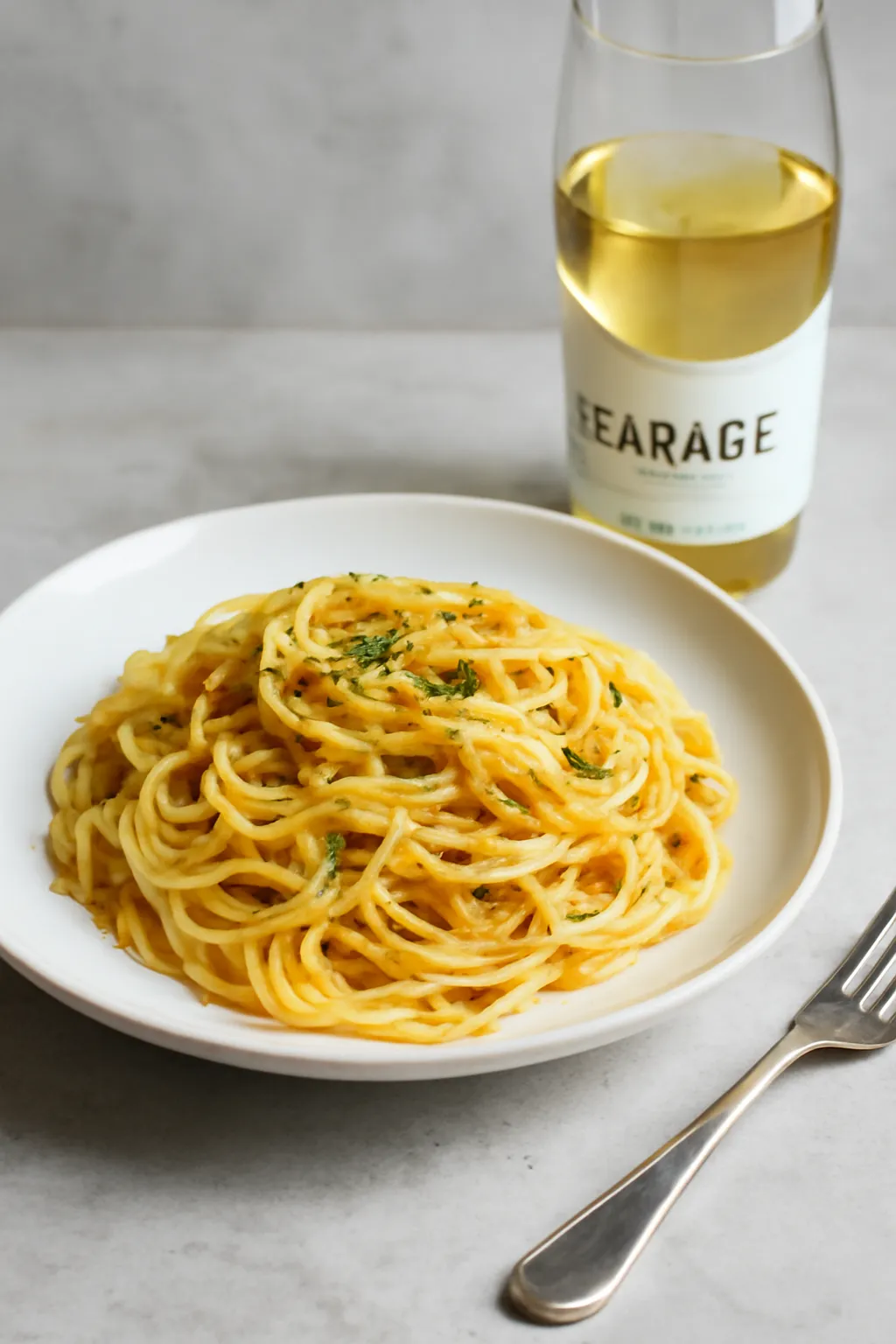Ever wondered how white wine could elevate a simple pasta dish into a gourmet experience? Or what makes “White Wine Garage Pasta” such a unique concept? Dive in and discover how the elegance of wine meets the heartiness of comfort food in the most delicious way.
White wine pasta
White wine pasta is more than a recipe—it’s a reflection of balance and simplicity, where everyday ingredients become culinary gold. The hallmark of a great white wine pasta lies in how the wine accentuates the dish’s aromatics, acidity, and depth, bringing out the best in even the humblest ingredients.
Many people assume pasta sauces need to be heavy—think cream, tomato, or meat—but white wine pasta offers a lighter, more refined touch. It all begins with deglazing a pan with a splash of white wine after sautéing garlic, shallots, or pancetta. This simple technique unlocks a spectrum of flavors that deepen as the sauce simmers.
Key ingredients in a classic white wine pasta:
-
Extra virgin olive oil
-
Finely chopped garlic
-
Dry white wine (Sauvignon Blanc or Pinot Grigio are perfect)
-
Freshly ground black pepper
-
Grated Parmigiano Reggiano
-
Flat-leaf parsley or basil
-
Al dente spaghetti or linguine
For example, I once hosted a summer dinner where I served a lemony white wine pasta topped with seared scallops. The wine brought out the natural sweetness of the shellfish while cutting through the richness of the butter. It was simple, elegant, and incredibly satisfying.
Another memorable version was a white wine and mushroom tagliatelle I prepared after foraging for chanterelles. The earthiness of the mushrooms met the acidity of the wine in perfect harmony, creating a dish that felt rustic yet sophisticated.
White wine pasta is ideal for those seeking a quick, one-pan meal that doesn’t compromise on flavor or sophistication. Plus, it’s endlessly customizable—toss in seafood, grilled chicken, or go vegetarian with roasted vegetables.
더욱 자세히 알아보려면 아래 버튼을 클릭하세요.
👉”Discover White Wine Pasta Recipes”👈
White wine
When people talk about cooking with wine, they often forget that not all white wines are created equal—especially when it comes to cooking. Understanding the role of white wine in food preparation gives you an upper hand in crafting elevated dishes.
Why white wine is essential in the kitchen:
-
Acidity It balances the richness of oils and fats.
-
Aromatics Alcohol carries flavor and then evaporates, leaving behind a deeply aromatic profile.
-
Deglazing It helps lift the caramelized bits (fond) from the pan, turning them into liquid gold.
-
Layering flavor White wine adds complexity, especially when reduced.
When I worked in a Tuscan-style bistro, I learned that dry whites like Soave or Verdicchio worked wonders in delicate dishes. One night, our chef prepared a risotto with white wine, saffron, and grilled shrimp that stunned every guest. The wine gave a faint fruitiness and zip without overpowering the rice’s creamy base.
Another time, cooking at home with a bottle of dry Chenin Blanc, I noticed how its minerality elevated a simple garlic and lemon sauce I made for linguine. It turned out to be one of the most unexpectedly delightful dishes I’ve ever made.
But the wine itself should be drinkable on its own. If you wouldn’t sip it from a glass, don’t put it in your pasta.
Best practices when cooking with white wine:
-
Use dry wines with low residual sugar.
-
Avoid oaky Chardonnays—they can taste bitter when reduced.
-
Add wine early in the cooking process so the alcohol cooks off.
-
Use wine as a balancing agent, not a main flavor.
더욱 자세히 알아보려면 아래 버튼을 클릭하세요.
White Wine Garage Pasta
Now let’s talk about what truly sets this dish apart: White Wine Garage Pasta. It’s not just a meal—it’s a vibe, a concept, a lifestyle born from culinary experimentation in humble kitchen spaces where creativity thrives without pressure or pretense.
Imagine transforming your small kitchen or “garage” cooking space into a mini bistro. The term evokes raw creativity, accessible elegance, and a craft-oriented philosophy—perfectly represented by a plate of glossy pasta kissed with high-quality white wine.
This dish rose to popularity in food culture through Instagram chefs and pop-up supper clubs. The idea? Strip away the frills and focus on flavor, texture, and technique.
What makes White Wine Garage Pasta different?
-
Minimal ingredients with maximum impact
-
Cooked using one pot or pan
-
Incorporates premium, indie-label wine like “Garage Wines”
-
Focuses on process: slow sauté, wine reduction, pasta water emulsification
-
Often finished with fresh herbs or citrus zest
I first encountered this trend at a pop-up in Brooklyn where the chef used biodynamic white wine from a small-batch urban winery. He made a cacio e pepe-style spaghetti but used white wine instead of butter. The wine emulsified into a silky sauce that was bright, punchy, and addictive.
Inspired, I tried my version in my apartment kitchen. I used Garage Sauvignon Blanc, shallots, garlic, and spaghetti. The sauce came together in 12 minutes—glossy, rich, fragrant. The name “Garage Pasta” suddenly made perfect sense: it’s a love letter to doing more with less.
This movement emphasizes the art of simplicity—where your technique and ingredients shine, not your kitchen gear.
더욱 자세히 알아보려면 아래 버튼을 클릭하세요.
👉”Learn More About Garage Pasta Culture”👈
Conclusion
White wine pasta, the allure of cooking with white wine, and the rise of White Wine Garage Pasta all point to one thing: you don’t need a fine dining kitchen to create extraordinary meals. All it takes is quality ingredients, a splash of good wine, and a willingness to experiment.
As Julia Child once said, “Wine is meant to be enjoyed with food—and the best way to enjoy it is to cook with it too.” So next time you uncork a bottle, consider saving a splash for your skillet. You might just surprise yourself.






